🎧 Prefer to listen? The full audio read is above.
Every time the genocide in Gaza is mentioned, a single question interrupts the conversation: “But do you condemn Hamas?”
It doesn’t matter if you’re talking about the bombing of refugee camps, the killing of aid workers, or the starvation of children. The latest peer-reviewed analysis, published this January in The Lancet, estimates more than 64,000 traumatic injury deaths as of June 2024, and that’s before counting starvation, disease, and blocked aid. Still, the question persists: Didn’t Hamas start this?
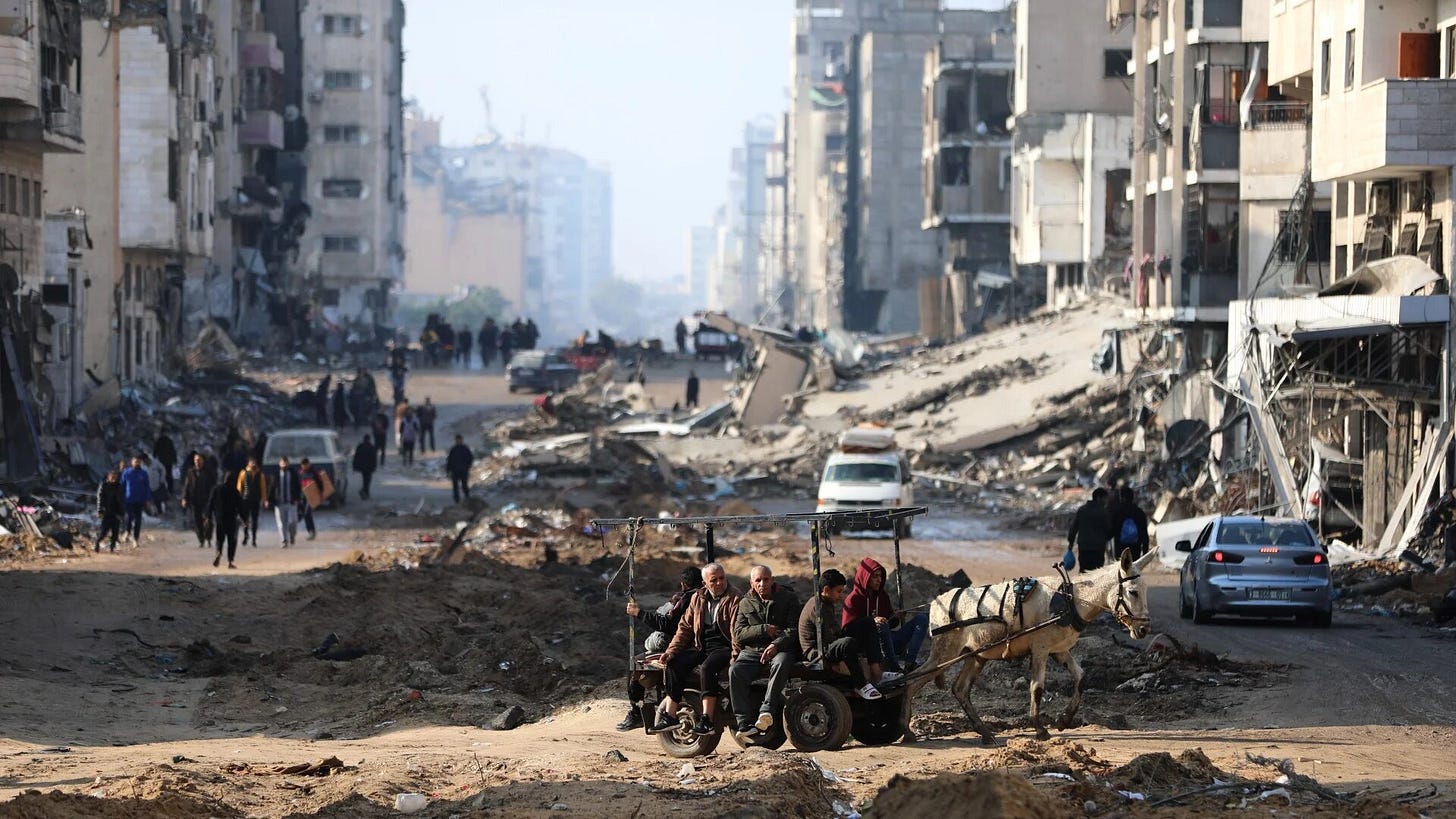
This question is not rooted in history. It’s a script designed to justify slaughter and silence solidarity.
You don’t have to agree with Hamas’ ideology to understand why it exists or support its every tactic to recognize the right of an occupied people to resist.
And you don’t have to endorse any faction to reject the lie that Palestinians chose genocide by voting 19 years ago.
This piece does not attempt to relitigate the events of October 7th. The Israeli government’s version has been broadcast daily. Amplified by Western media, rarely questioned, and used to justify an onslaught that has killed tens of thousands. What remains suppressed is the history: the conditions that shaped Hamas, the system that sustains this war, and the silence that enables it. To understand this moment, we must look beyond one day, and examine the structure that made it inevitable.
Like what you’re reading?
Subscribe here for weekly essays that challenge power, not just critique it.
The Making of a Movement
Hamas was founded in 1987, in the middle of the First Intifada, a mass Palestinian uprising against Israel’s occupation of the West Bank and Gaza. At the time, the Palestinian nationalist movement was largely dominated by the PLO and its Marxist factions like the Popular Front for the Liberation of Palestine (PFLP) and the Democratic Front for the Liberation of Palestine (DFLP). These groups had long advocated for armed struggle and had built broad popular support. But after decades of exile, infighting, and political decay, many Palestinians, especially in Gaza, were losing faith.
Hamas rose to meet that crisis.
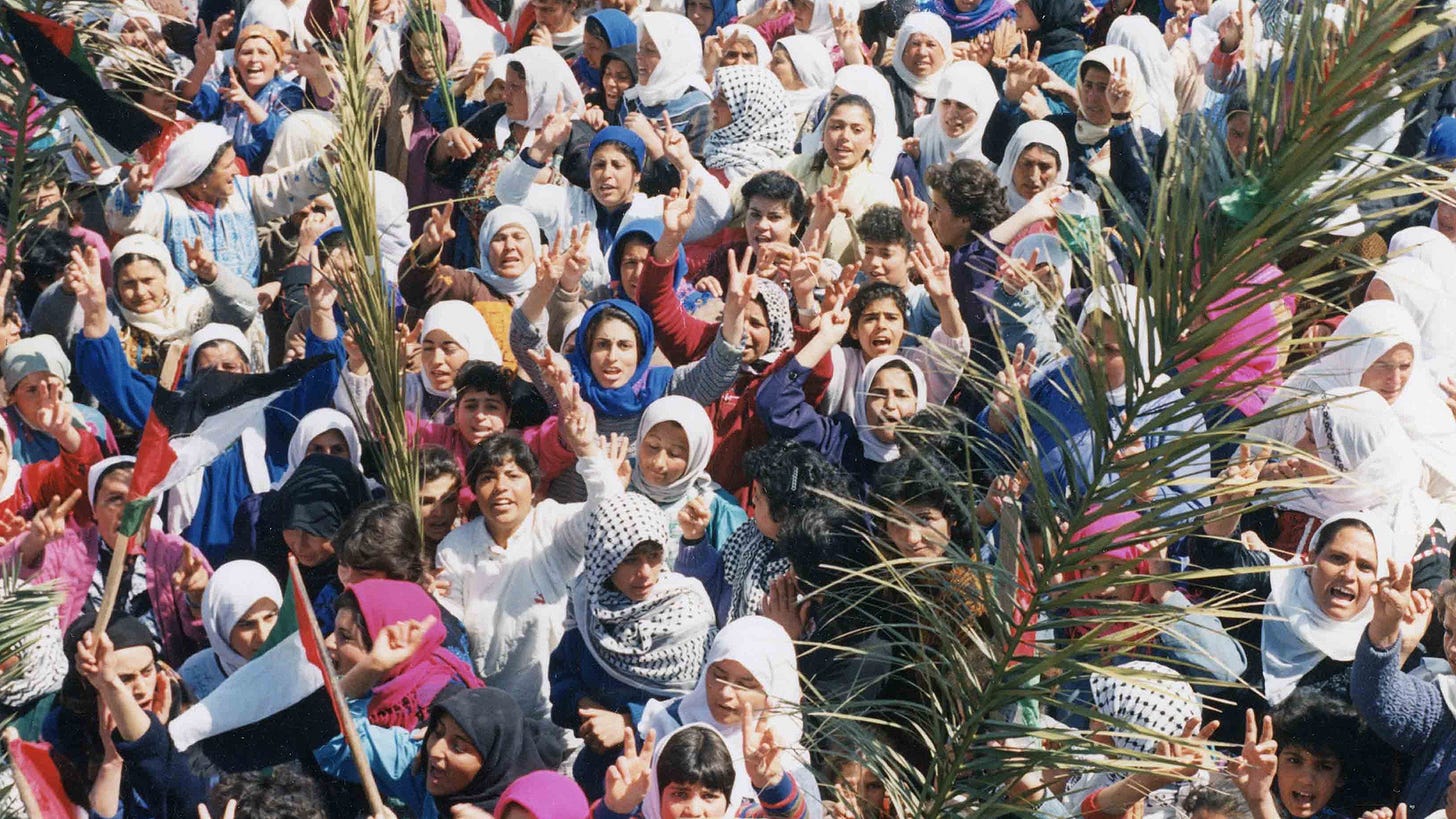
Emerging from the Palestinian branch of the Muslim Brotherhood, Hamas began not as a military force, but as a religious and charitable network. It built clinics, schools, food banks, and religious institutions. It provided what the occupation had destroyed and what the Palestinian Authority had failed to deliver: basic services, social cohesion, and moral clarity. In neighborhoods ravaged by poverty and surveillance, this mattered.
And Israel noticed.
For much of the 1980s, Israeli authorities tacitly encouraged the growth of Hamas and similar Islamist groups. Former Israeli officials have admitted that they saw these religious factions as a useful counterweight to the secular and often Marxist elements of the PLO. As one Israeli military court judge told The Wall Street Journal in 2009, “Hamas, to my great regret, is Israel’s creation.”
The strategy was classic: divide and rule.
If Palestinian resistance could be split along ideological lines, secular vs. Islamist and nationalist vs. religious, then the unity needed for national liberation could be undermined. For a time, the plan worked. But it also gave rise to an organization that would outlast its rivals and eventually govern under siege.
As Israeli repression intensified and other factions faltered, Hamas began developing its armed wing, the Izz ad-Din al-Qassam Brigades, in the early 1990s. What began as a network of volunteers evolved into a complex political and military structure with deep roots in the community. Unlike the exiled leadership of the PLO, Hamas leaders lived among the people. When homes were demolished, they faced the wreckage firsthand. That proximity and sacrifice built legitimacy.
In 2006, that legitimacy was tested at the ballot box.
The legislative elections held that year were widely recognized by international observers as free and fair. Turnout was documented at 77%. The result: Hamas won 74 of 132 seats, shocking the Western world.
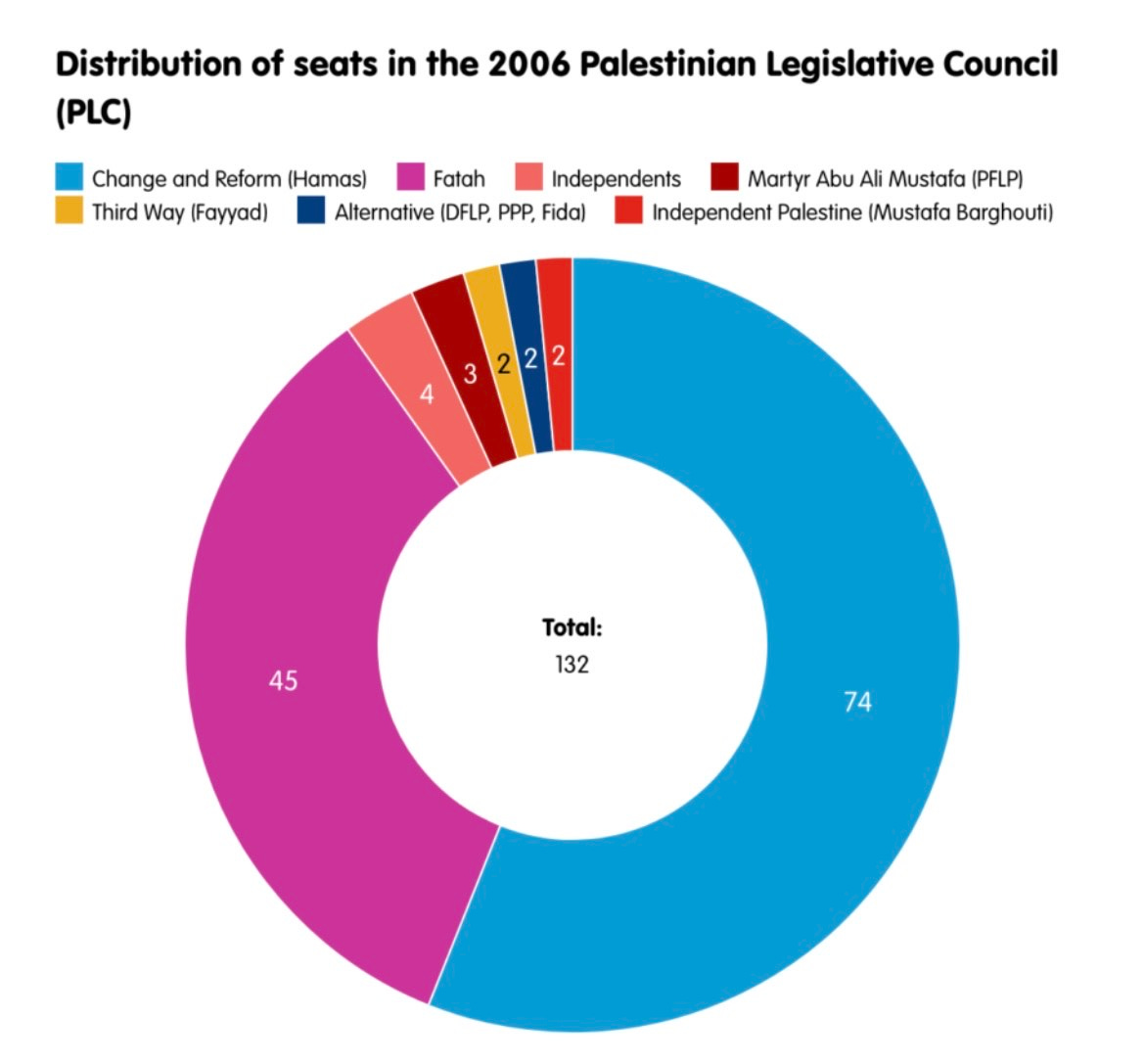
Why did they win?
Palestinians had endured a decade of the Oslo Accords that promised a state but delivered only more checkpoints, more settlements, and more despair. The Fatah-led Palestinian Authority had become synonymous with corruption and collaboration. By then, Fatah’s leadership was associated not just with failed diplomacy but with U.S.-trained security forces policing their own people. Hamas, unlike its rivals, was seen as disciplined, unbought, and willing to resist.
The Palestinian people were not voting for jihadism or clerical rule. They were voting for sovereignty, clean governance, and the chance to survive with dignity.
The press cast the outcome as a dangerous turn away from diplomacy. But on the ground, it was a clear rejection of a failed peace process and a political class that had delivered only more occupation.
“Even left-wing, secular Palestinians voted for Hamas,” Vanity Fair’s David Margolick reported at the time, “because, after years of Fatah's corruption and clumsiness… Hamas offered a chance to protest, a fresh start, dignity, honesty, hope.”
Administrative Colonialism
After Hamas’s surprise victory in 2006, the West had a choice: honor the democratic process it claimed to support or punish Palestinians for choosing the wrong winners. It chose punishment.
Within weeks, the United States and European Union cut off funding to the Palestinian Authority, and Israel withheld tax revenues it collects on behalf of Palestinians. Western-backed Fatah forces clashed with Hamas fighters in the streets. A low-level civil war broke out in Gaza and the West Bank. And by 2007, Hamas was locked inside the Gaza Strip, governing under siege.
The message was clear: democracy is conditional.
But the collapse of Palestinian political life didn’t begin with the elections. It began with the framework that made those elections meaningless: the Oslo Accords.
Brokered by the U.S. and signed in the 1990s, the Oslo framework promised a path to peace and statehood. What it delivered was a subcontracted occupation. The new Palestinian Authority had the façade of sovereignty, but none of the substance. It could issue passports, but not control borders. It could build roads, but not stop Israeli bulldozers. It could hold elections, but not govern freely.
Meanwhile, Israel retained control over land, water, movement, and security. Settlements continued to expand. Military checkpoints multiplied. The occupation continued in all but name.
Nowhere was this illusion more powerful than in Gaza.
In 2005, Israel claimed to “withdraw” from Gaza, dismantling its settlements and removing troops from inside the Strip. Western leaders and Israeli officials pointed to this move as proof that Palestinians had been granted autonomy, and thus were to blame for everything that followed. But this narrative falls apart under scrutiny.
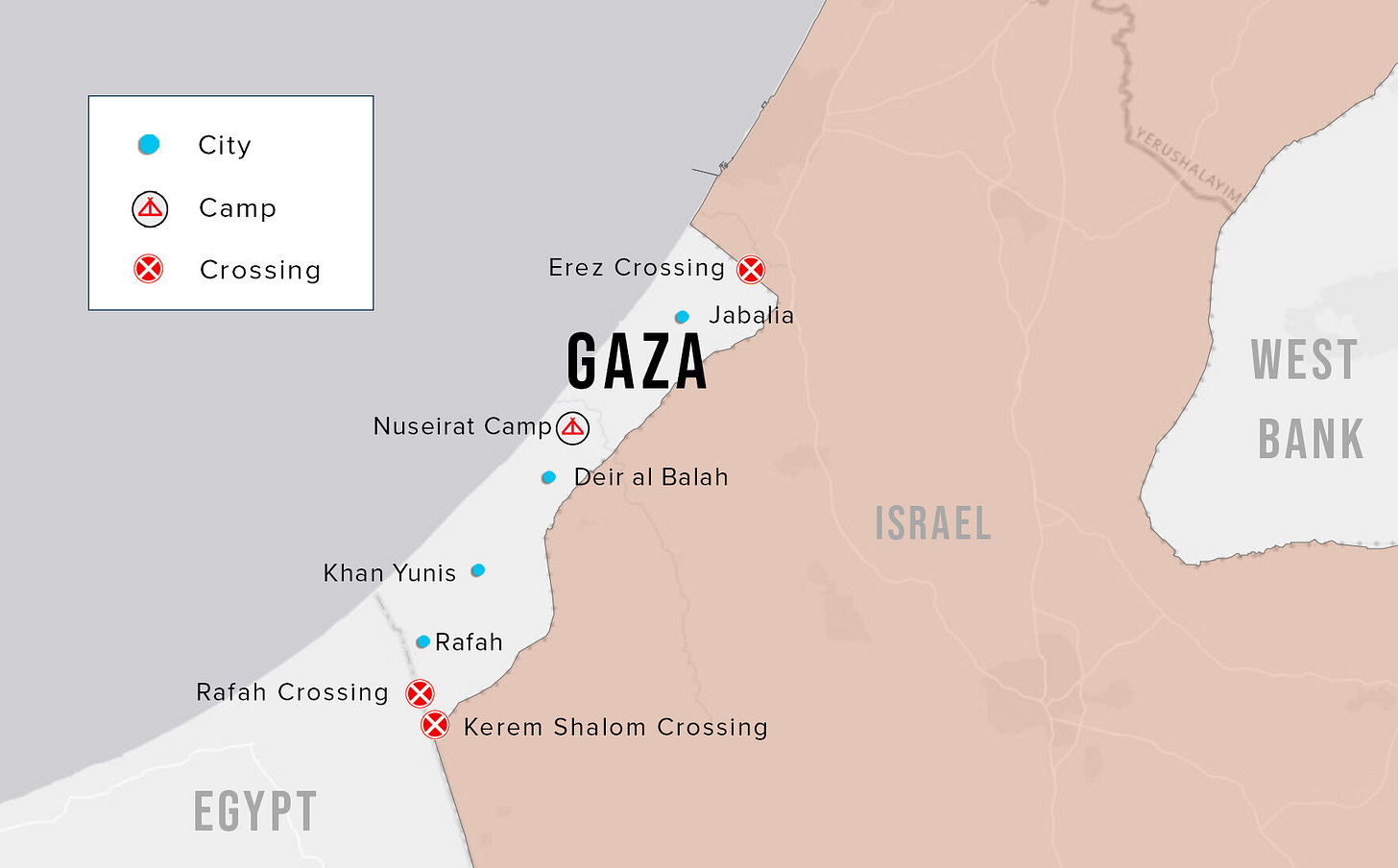
International law does not define occupation solely by troop presence, but rather by “effective control.” And by every measure, Israel still controls Gaza’s airspace, coastline, population registry, and borders. It regulates imports and exports, electricity and fuel, even calories. It routinely targets Gaza’s infrastructure, from power plants to water systems to hospitals. And it maintains the right to reenter militarily at any time, a right it has repeatedly exercised in devastating fashion.
What’s framed as independence is, in reality, an open-air prison.
Denying that Gaza is occupied helps Israel to escape accountability under international law. By pretending Palestinians govern themselves, the West frames their resistance as aggression. The truth is simpler: the occupation never ended. Israel shifted how it was imposed.
What Hamas Actually Is
According to the Western media’s frame, Hamas is a shadowy terrorist cell. Fanatical, irrational, and indistinguishable from groups like ISIS or al-Qaeda. But that caricature collapses under even minimal investigation. In reality, Hamas is a political organization with three distinct but interwoven components: a governing body, a military wing, and a vast social infrastructure. And like many national liberation movements before it, Hamas was shaped in the crucible of occupation and war.
The political wing of Hamas governs Gaza. It oversees ministries, provides utilities, administers hospitals and schools, and negotiates ceasefires. This work is not always efficient or free of contradiction; no political body under siege can be. But it’s real governance. The social wing, meanwhile, maintains charitable networks, religious institutions, and food programs. These were the foundation of the group’s legitimacy long before it ever fired a rocket.

Western media and Israeli officials have blurred these distinctions, labeling roles like teachers, doctors, and civil servants as “Hamas-affiliated” simply for working in Gaza’s public sector. This flattening not only obscures the reality on the ground, it makes every aspect of Palestinian life a ‘legitimate’ target.
Then there’s the military wing, the Izz ad-Din al-Qassam Brigades. Formed in 1991, it functions as a guerrilla resistance force: building tunnels, manufacturing weapons under blockade, and organizing armed defense against repeated Israeli incursions. While some of Hamas’s tactics deserve criticism, none erase the fact that Palestinians live under siege, or justify the mass killing of civilians that Israel carries out under the guise of retaliation. And to treat the military wing as the whole of Hamas is to ignore the political and material realities that brought it into being.
Even critics must reckon with the fact that no Palestinian faction, including Hamas, has ever been allowed to exercise full sovereignty. Its governance emerged under military blockade. Its military wing fights in the absence of a national army. Its social work stepped in where institutions had collapsed.
Hamas is not above criticism. But it must be understood as a formation born of specific material conditions. In this sense, Hamas mirrors other national liberation movements throughout history: disciplined in some ways, contradictory in others, and shaped by the very forces that seek to destroy it.
Armed Resistance, International Law, and Moral Clarity
Hamas’s armed struggle is often presented as uniquely illegitimate, an affront to morality, peace, and international law. But under international law, armed resistance to military occupation is not only permitted, it is explicitly recognized. The key condition is that acts of resistance must make a distinction between military and civilian targets.
Hamas has at times failed this standard. Some attacks on civilian targets are subject to legitimate legal and moral criticism. But violating the laws of war does not forfeit a people’s right to resist occupation, just as Allied war crimes didn’t negate the legitimacy of resisting Nazi Germany. International law separates the legitimacy of resistance from the legality of particular tactics.
Every act of violence must be judged in context. A colonizer cannot cite its own presence as justification for war, then deny the colonized the right to resist. Nor can Israel plausibly claim self-defense while enforcing a permanent siege, expanding settlements, and displacing millions. Even when resistance comes first in the latest sequence of attacks, it is a response to the broader architecture of occupation.
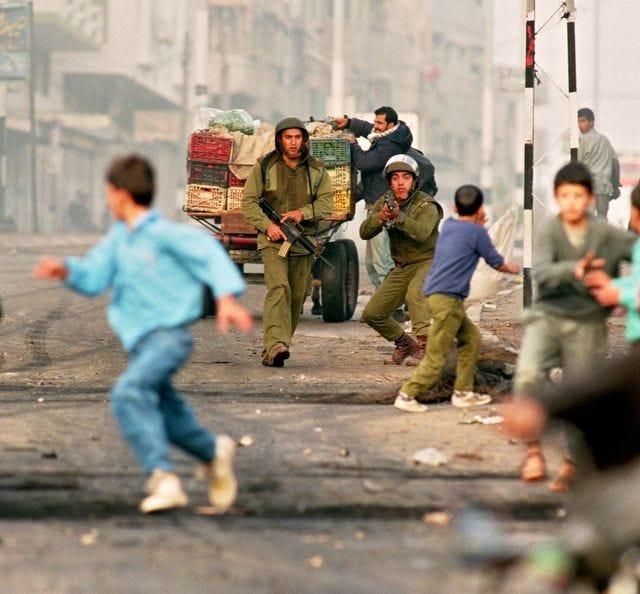
In fact, under these conditions, it is the occupied who are acting in self-defense: defending their land, their homes, and their right to exist. The legal and moral framework must reflect the asymmetry of power. Not obscure it.
To understand this, we need only turn to history.
When French partisans resisted Nazi occupation, their tactics included sabotage, assassination, and ambush. They killed collaborators. They bombed trains. They took up arms not because they loved violence, but because the alternative was permanent subjugation. The world now calls them heroes.
When the Allied powers firebombed Dresden, Tokyo, and other civilian centers, those actions were excused (even praised) as unfortunate necessities of war.
The question, then, is not whether violence is ever used. It’s who gets to use it, and in service of what cause.
That doesn’t mean all tactics are just. But it does mean that applying different moral and legal standards, one for states and another for stateless peoples, exposes the hypocrisy of the system.
Resistance under occupation is a legal right. It is also a human one.
Hamas as Pretext
In Western media and politics, “Hamas” is no longer just an organization; it’s a slur. Protests against Israel’s war on Gaza are dismissed as “pro-Hamas.” Students have been doxxed, workers fired, and legal residents deported for opposing genocide.
These narratives collapse everything into one convenient enemy. “Hamas” becomes shorthand for Palestinian violence, then for Palestinians themselves. The logic is simple and sinister: if every Palestinian is Hamas, then every Palestinian can be punished. Their homes can be bombed. Their speech can be criminalized. Their suffering can be ignored.
By flattening an entire people into a single label, Israel and its allies obscure the real causes of the conflict: occupation, siege, and apartheid; shifting the moral lens. Resistance becomes terrorism. Solidarity becomes extremism.
That is the power of narrative. And it’s why clarity isn’t just academic, it’s a form of defense.
Mass Death and the Cost of Dehumanization
As early as October 2023, Israeli leaders declared their intent to “cut off electricity, food, and fuel” and treat all civilians as complicit. One government advisor openly called for using starvation as a weapon. When people fled south, they were bombed. When they returned north, they found rubble. Humanitarian aid has been choked at every turn: delayed, denied, and sometimes deliberately attacked.
Under the new Gaza Humanitarian Foundation, which the U.S. touted as a neutral distributor of aid, the killings have continued. Civilians waiting for food have been shot en masse. Since the GHF took over, Israeli forces have reportedly killed over 500 people at aid distribution sites. Aid trucks arrive under drone surveillance, often without coordination, and desperate crowds are met not with relief but with bullets. The UN has called the situation a “death trap.” And most recently, the Israeli publication Haaretz reported that Israeli soldiers were ordered to deliberately open fire on unarmed Palestinians waiting for humanitarian aid, confirming long-standing accusations that these killings are not incidental but policy.

That’s what dehumanization does. It turns mass death into a necessity. It lets leaders talk about "precision" while leveling entire city blocks. It lets Western media cite Israeli press releases while ignoring the hospitals overflowing with children. It lets politicians mourn one side’s dead while funding the killing of the other’s.
To look at Gaza and see only Hamas is not just inaccurate, it is dangerous. It is how tens of thousands of people are massacred with the world watching. And how, in the eyes of empire, that number is still not enough to stop.
You Don’t Have to Agree, But You Must Understand
You don’t have to support Hamas. You don’t have to agree with their ideology or their tactics. But you do have to understand what they are, why they exist, and why millions of Palestinians still support them.
Because if you don’t, someone else will define them for you.
And they already have.
In the dominant narrative, Hamas is nothing but terror: irrational, evil, inhuman. That story doesn’t just serve Israel’s war effort. It dehumanizes an entire people. It turns children into collateral. It makes starvation a strategy. It makes genocide justifiable.
That’s why understanding matters. Not to excuse every action, but to break the spell of propaganda. To recognize that resistance under occupation is not only legal, it is inevitable. And that refusing to distinguish between the violence of empire and the violence of the oppressed is not moral clarity. It’s surrender.
Truth is not neutrality. It is a weapon. One that must be wielded in defense of those being buried beneath the rubble of lies.
And in Gaza, the truth is this: there can be no peace without justice, no ceasefire without memory, and no freedom without resistance.
This piece made you think? Help others see it too.
Share this piece
Next week, we return to the Americas, to a revolution the U.S. has spent six decades trying to strangle.
Cuba didn’t fail. It survived.
Still Standing: Cuba against the odds
drops Tuesday, July 8 at 11 AM ET.
Subscribe to be notified when it goes live.
Further Reading
These works offer deeper political grounding for understanding Hamas and the broader Palestinian resistance not as a distortion of peace, but as a response to siege, dispossession, and imperial containment. Each book is rooted in a distinct intellectual tradition: liberal critique, postcolonial theory, or Marxist analysis, providing essential context for how resistance emerges, evolves, and is framed.
The Punishment of Gaza by Gideon Levy
A liberal human rights critique from inside Israel. This collection of reporting by Haaretz journalist Gideon Levy documents the systematic violence inflicted on Gaza’s civilian population. Levy exposes how the siege and repeated military campaigns are not defensive necessities, but collective punishment normalized by Israeli society.Hamas Contained: The Rise and Pacification of Palestinian Resistance by Tareq Baconi
A liberal-leaning structural critique of Hamas’s evolution under siege. Baconi traces how Hamas grew from a grassroots resistance group into a governing body, and how its political trajectory has been shaped and constrained by Israeli and international attempts to manage, isolate, and pacify Palestinian defiance.Decolonizing Palestine by Somdeep Sen
A postcolonial analysis of resistance in the absence of sovereignty. Sen explores how Hamas, as both a state-like actor and a liberation movement, navigates a system that denies it legal recognition while demanding political accountability. His work draws on Fanon and Agamben to show how resistance is criminalized when stateless peoples fight back.Imperialism and Resistance by John Rees
A Marxist analysis of resistance movements under global empire. Rees connects the Palestinian struggle to broader anti-imperialist movements, offering a materialist framework for understanding armed resistance, mass organizing, and the political contradictions of fighting from within siege and subjugation.
Understand the world. Change the world.
You’ve read this far for a reason.
You’re not here to be comforted; you’re here because something isn’t adding up.
Let’s figure it out together.
Weekly essays from Concrete Analysis.
Direct. Unapologetic. Grounded in reality.
If something in this piece resonated or challenged you, I’d love to hear your thoughts in the comments below.




I love how informative this was!
Thanks for reading. I know this topic brings out strong reactions, and that’s part of the point.
I welcome thoughtful disagreement, questions, or critique.